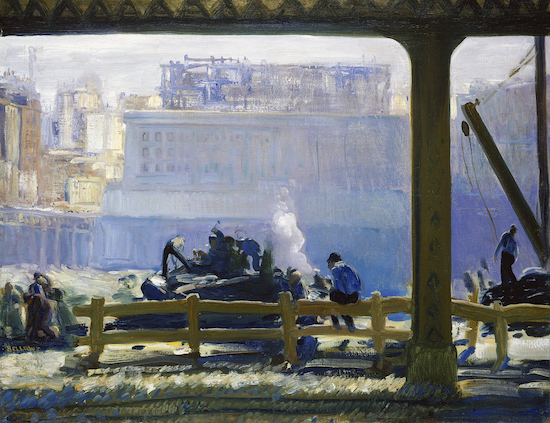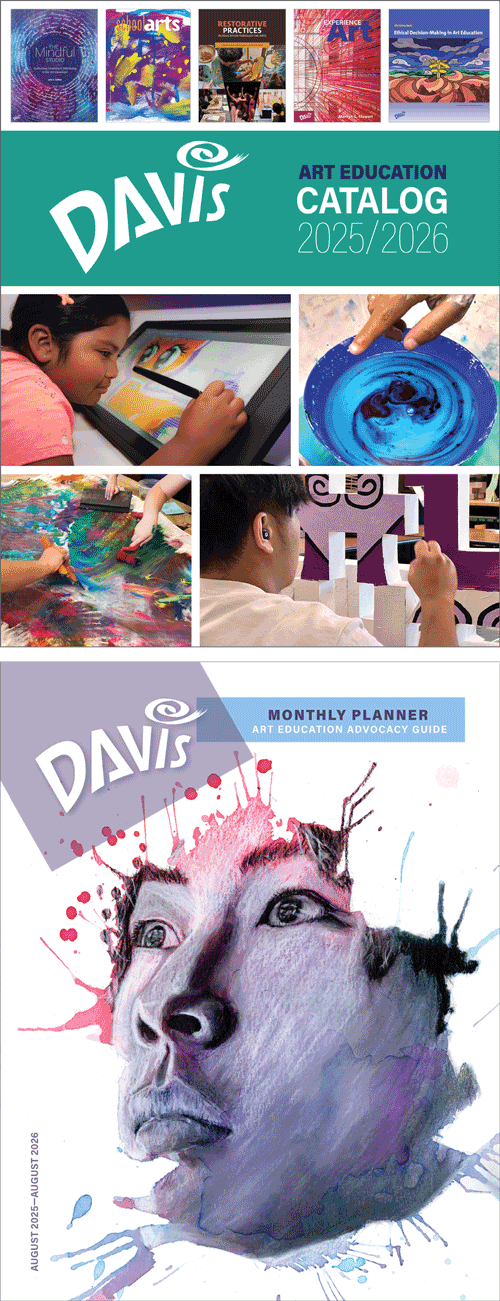Artist Birthday: George Bellows
George Bellows was a member of the group who called themselves The Eight, whom critics derogatorily dubbed “Ash Can School.” Those artists revolutionized subject matter in American painting, and, not surprisingly, many of them, like Bellows, were brilliant colorists.
Artist Birthday for 12 August: George Bellows (1882–1925, United States)
George Bellows was a member of the Ash Can School and a brilliant colorist.
 |
| George Bellows, Blue Morning, 1909. Oil on canvas, 86.3 x 111.7 cm. Image © 2025 National Gallery of Art, Washington, DC. (NGA-P0310) |
Shortly after arriving in New York, Bellows began associating with the artists of The Eight. For about ten years he produced paintings such as this scene of New York which, unlike Impressionists' positive urban views emphasized the chaos, congestion and drabness of life in the city. This painting is also one of a series of scenes of New York in snow in which Bellows experimented with tonal contrasts.
These works led to landscapes towards the end of his life that discarded the conservative palette colors in favor of mostly pure, bright color that resemble Impressionism. In paintings such as this, it is clear that Bellows is using the high key palette of Impressionism, evident in the dominant use of blues and violets instead of the traditional yellow-brown underpainting of American landscape painting. He also discarded the traditional use of black to create shadows, preferring, in this painting, cobalt blue.
Bellows was elected a member of the National Academy of Design in 1909, the youngest person ever awarded such an honor. Despite acceptance at the Academy for his cityscapes that displayed the "American temperament," his fluid brush work and accurately captured sense of the vitality of urban life in non-traditional subjects appealed to progressive artists. His treatment of city construction scenes is clearly more related to the aesthetic of the Italian Futurists, than the lighthearted urban scenes of the Impressionists.
After the introduction of Impressionism to American art starting in the 1880s, the next radical departure from American artistic tradition came in the early 1900s. Rather than a technical revolution—as Impressionism had been—it was a revolution in subject matter. It was the 1908 exhibition of the “Eight Independent Artists,” or simply “The Eight”. This group of artists had had their work rejected for showing in 1907 by the National Academy.
Many of the artists in the show had backgrounds in magazine and newspaper illustration. They were interested in the urban, industrial American scene rather than historical, allegorical, or literary content. Critics derogatorily dubbed the “The Eight” the “Ash Can School,” because of their preference for non-sentimental depictions of the less affluent aspects of city life. Although their styles varied, the Ash Can School artists were variously influenced by Impressionism and Dark Impressionism.
George Bellows was associated with the Ash Can School artists. He, however, enjoyed an equally honored reputation at the conservative National Academy of Design in New York. Born in Columbus, Ohio, he attended Ohio State University, then enrolled at the New York Art School in 1904. There he studied under American Impressionist William Merritt Chase (1849–1916) and the Dark Impressionist mentor of the Ash Can School Robert Henri (1865–1929). Bellows, while adopting some of the bright colors of Impressionism, also favored a traditional palette and broad brush strokes in tenebristic (high contrasts of dark and light) works that leaned towards Dark Impressionism.

Comments